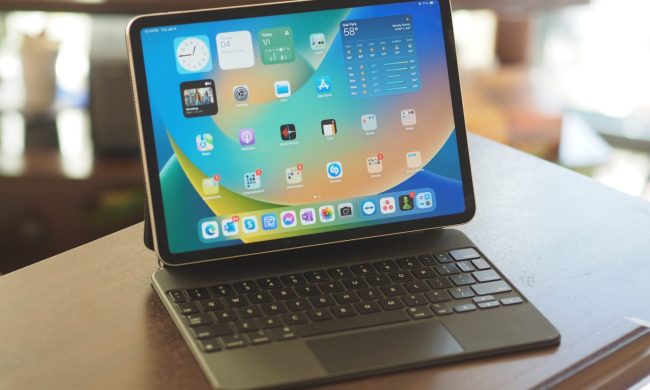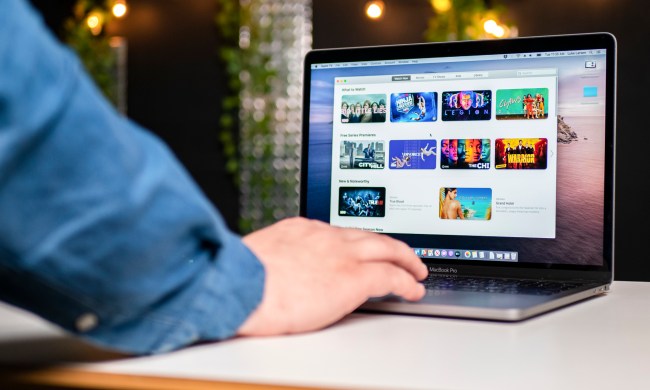Apple’s recently announced Studio Display has been confirmed to be compatible with PCs, albeit with limited functionality.
The technology giant told MacRumors that the Studio Display, revealed during its Peek Performance event on March 8, will indeed work with traditional PCs. However, Windows users won’t be able to make use of all the features.

Specifically, certain aspects that require MacOS to operate, including the True Tone component, will be unusable when Studio Display is connected to a PC system. True Tone technology “automatically adjusts the display’s color temperature as the environment changes for a more natural viewing experience.”
Although the built-in 12MP Ultra Wide webcam can be utilized by non-Mac users, Center Stage will only be functional with MacOS. The feature is a particularly useful addition to the product as users are continually shown in the center of the screen during video calls, even if they move around.
Any features that will need a firmware update will also not work with a PC. Elsewhere, support for Spatial Audio and the video-based Dolby Atmos will be offered for MacOS systems exclusively. As a result, PC users will be restricted to the speakers’ core functionality instead of being able to take full advantage of the Studio Display’s six-speaker sound system via Dolby Atmos and Spatial Audio.
The Studio Display comes with a 5K Retina screen. As such, Apple says the screen resolution will be determined by the system being used. If your PC is outfitted with a graphics card that’s powerful enough, you’ll be able to benefit from some of the Studio Display’s technical specifications, including numerous widely used color modes. As pointed out by Tom’s Hardware, some of these range from photography (P3-D65) to internet and web (sRGB).
Again, the GPU will have to be capable of supporting such color gamuts and a 5K resolution at 60Hz. Certain desktops may also struggle with the Studio Display’s connectivity options, namely the Thunderbolt 4/USB-C ports.
Apple’s 27-inch Studio Display is scheduled for a March 18 launch, with pricing ranging from $1,599 to $2,229. That’s a steep cost for a monitor, but Apple stressed that it’s “loaded with incredible features that no other desktop display can deliver.” The 5K Retina screen supports 600 nits of brightness, P3 wide color, and True Tone technology. It also comes with the A13 Bionic chip, which powers elements such as Spatial Audio, and nano-texture glass that further minimizes glare.
Interestingly, display analyst Ross Young’s sources indicate that Apple is already working on the successor to the Studio Display and a more powerful Pro model could launch as soon as June.



